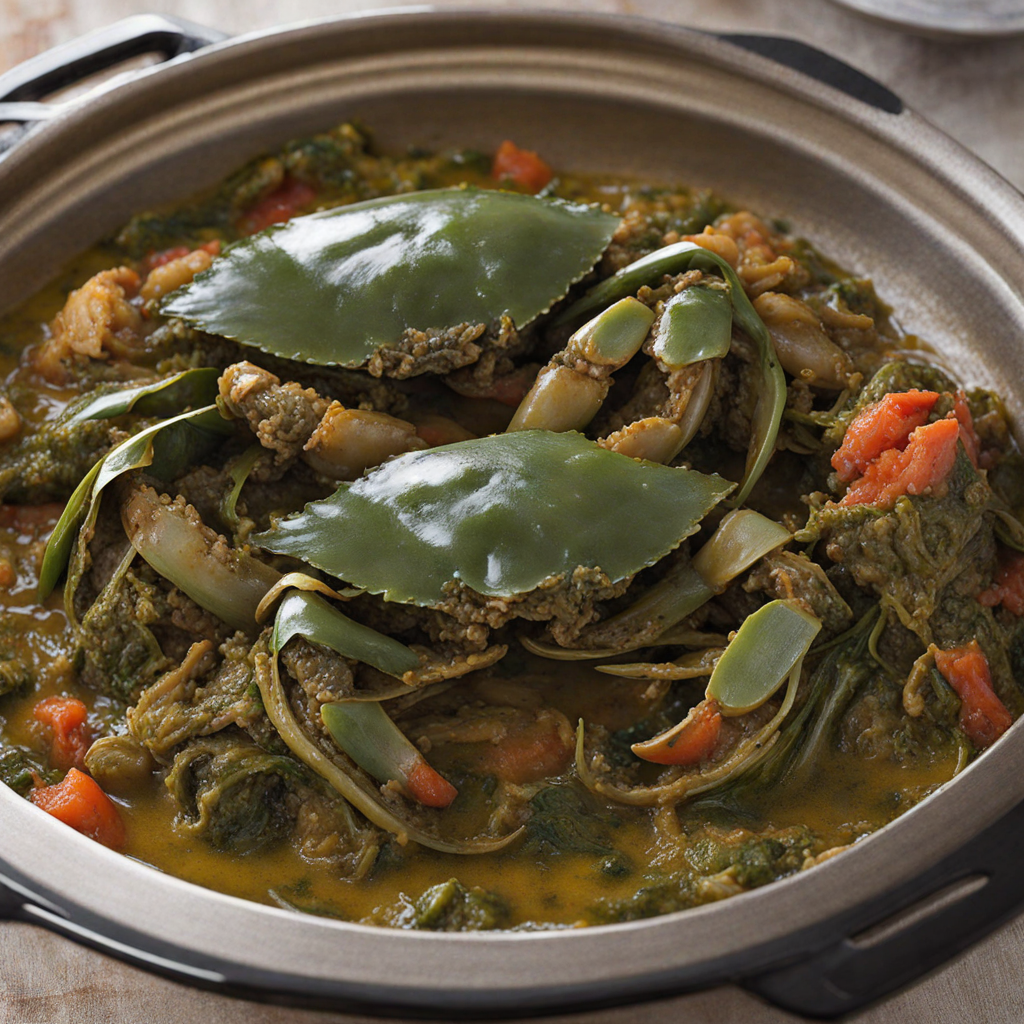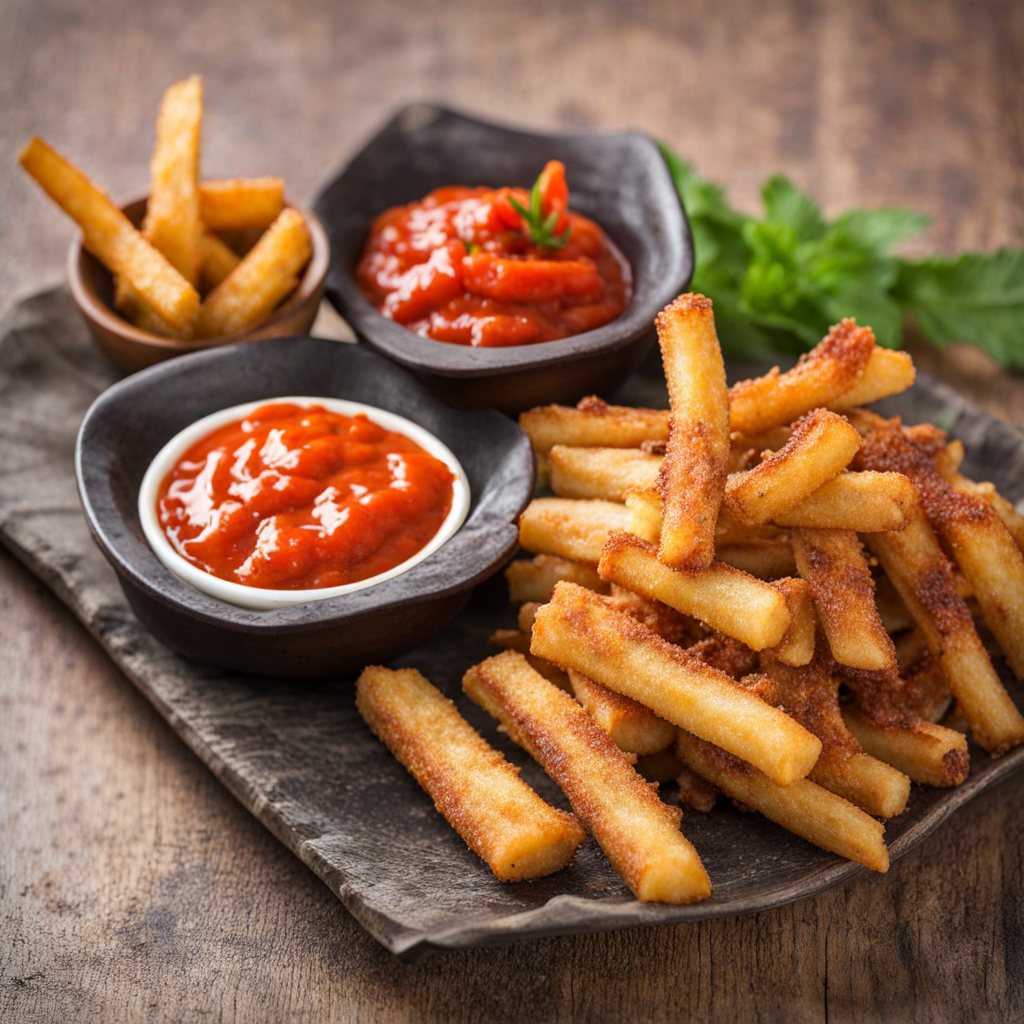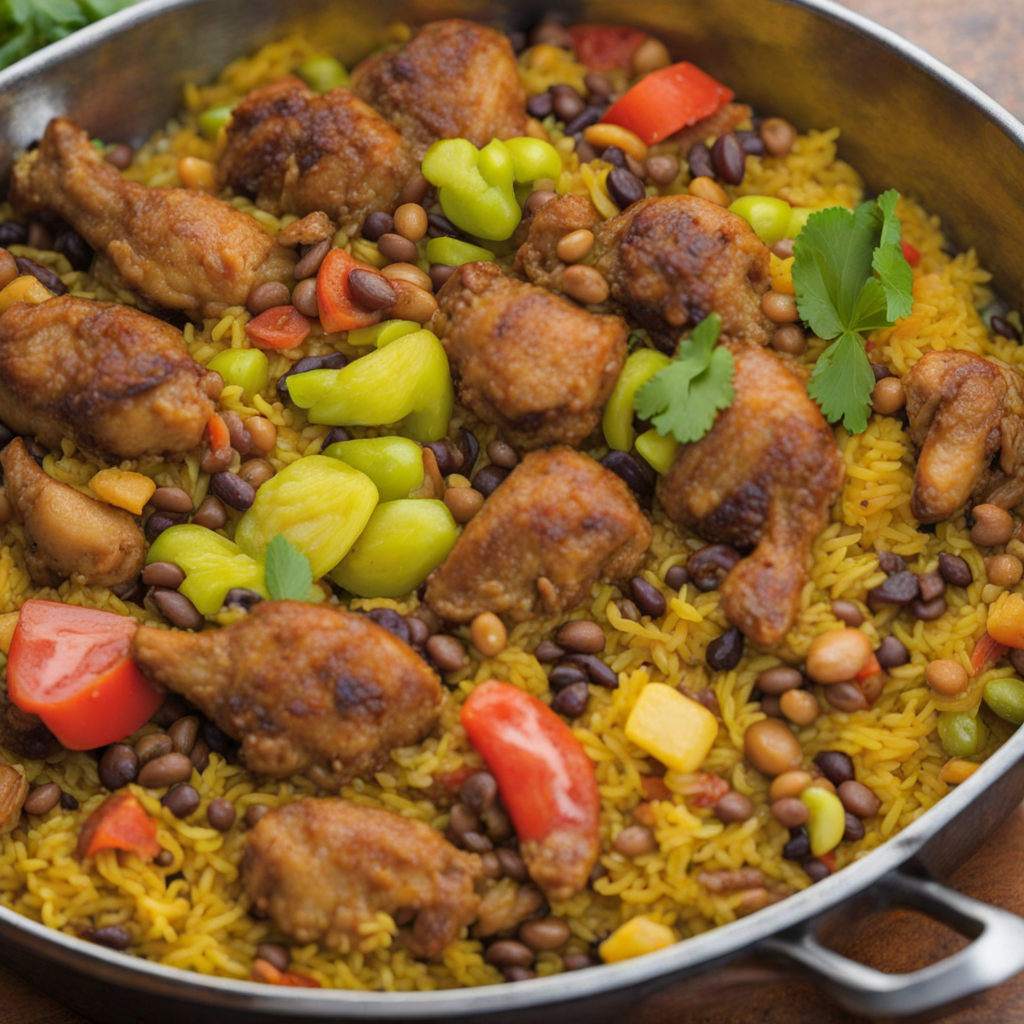Crab and Callaloo
Crab and Callaloo is a quintessential dish from Trinidad and Tobago that beautifully showcases the rich culinary heritage of the Caribbean. At its heart, the dish features succulent, sweet crab meat, often sourced from the local waters, which is cooked to perfection. The crabs are typically steamed or boiled, sometimes with a blend of spices, allowing the natural flavors to shine through. This dish is not merely a seafood experience; it embodies the vibrant spirit of Trinidadian cuisine, where fresh ingredients and bold flavors are paramount. Complementing the crab is callaloo, a leafy green vegetable that is a staple in many Caribbean households. Made from dasheen leaves, it is prepared by cooking the greens down into a creamy, rich sauce often enhanced with coconut milk, onions, garlic, and spices. The callaloo offers a slightly earthy taste and a velvety texture, which pairs harmoniously with the sweet and briny notes of the crab. Together, they create a delightful contrast that highlights the best of both ingredients. This dish is often served with a side of rice, providing a satisfying base that soaks up the flavorful juices. The combination of the tender crab meat and the luscious callaloo creates a comforting and indulgent meal. Crab and Callaloo is not just a dish; it’s a culinary experience that invites you to savor the essence of Trinidad and Tobago’s rich cultural tapestry, making it a must-try for anyone looking to explore new flavors.
How It Became This Dish
Crab and Callaloo: A Culinary Journey Through Trinidad and Tobago #### Origins Crab and callaloo is more than just a dish in Trinidad and Tobago; it is a vibrant expression of the islands' rich cultural tapestry. The dish features two primary components: crab, typically blue crab (Callinectes sapidus), and callaloo, a leafy green vegetable that is often made with amaranth leaves, though it can also include taro leaves and various seasonings. The roots of this dish can be traced back to the indigenous peoples of the Caribbean, primarily the Arawaks and Caribs, who fished the bountiful waters and cultivated local vegetation long before European colonization. The preparation of callaloo has deep historical roots that connect to Africa, as enslaved Africans brought their culinary practices to the Caribbean. Callaloo itself is derived from the West African dish “palava,” which refers to a stew made with leafy greens. The blending of these culinary traditions laid the groundwork for what would become a beloved dish in Trinidad and Tobago. #### Cultural Significance Crab and callaloo is emblematic of Trinidadian and Tobagonian identity. It is often enjoyed during special occasions, family gatherings, and festive celebrations, highlighting its status as a dish that brings people together. The annual crab season, which typically occurs during the rainy months, sees local fishermen venturing out to catch blue crabs, igniting a cultural phenomenon centered around this delicacy. This season is marked by festivities, with communities engaging in crab-catching expeditions and preparing grand feasts. The dish also serves as a symbol of resilience and adaptability. The fusion of indigenous, African, and European influences reflects the islands' colonial history and the intermingling of diverse cultures. It showcases how food can transcend boundaries, creating a unique culinary identity that resonates with the people of Trinidad and Tobago. Furthermore, crab and callaloo is often associated with storytelling and family traditions, as recipes are passed down through generations, each family adding its own flair to the dish. #### Development Over Time As Trinidad and Tobago evolved through the centuries, so too did the dish of crab and callaloo. In the early colonial days, the use of crab in cooking was primarily utilitarian, a way for the local population to make the most of the rich marine resources available to them. The introduction of spices and flavorings, such as garlic, onion, thyme, and pepper, transformed the dish into something more complex and flavorful. During the 19th century, the influx of indentured laborers from India brought new ingredients and culinary techniques that enriched the local cuisine. Spices such as curry and saffron began to appear in various dishes, including callaloo. Although crab and callaloo traditionally remained a dish rooted in African and indigenous culinary practices, the interaction between different ethnic groups led to the incorporation of new flavors, enhancing the dish's appeal. In the 20th century, as tourism began to flourish in Trinidad and Tobago, crab and callaloo gained prominence on restaurant menus and at culinary festivals. The dish became a symbol of Trinidadian culture, often showcased at events such as the Tobago Heritage Festival and Carnival, where it is celebrated alongside other local specialties. The exposure to a global audience has allowed crab and callaloo to evolve further, with chefs experimenting with presentation and ingredients, elevating it to a gourmet experience while still respecting its humble origins. #### Modern Interpretations Today, crab and callaloo can be found in various forms, from traditional home-cooked versions to upscale restaurant presentations. Chefs have begun to experiment with the dish, incorporating elements from global cuisines while maintaining its core components. Creative variations might include the addition of coconut milk, shrimp, or even a spicy pepper sauce, reflecting the dynamic nature of Trinidadian cuisine. The dish is also a focal point for discussions around sustainability and environmental awareness, as there are growing concerns about crab populations and the impact of overfishing. Many local initiatives promote responsible fishing practices to ensure that future generations can continue to enjoy this culinary treasure. #### A Dish of Community At its heart, crab and callaloo represents more than just a meal; it embodies the spirit of community and shared heritage in Trinidad and Tobago. Families often gather to cook together, passing down stories and techniques while preparing the dish. The communal aspect of eating crab and callaloo—often served in a shared pot—encourages interaction and connection among diners, emphasizing the importance of food as a medium for social bonding. In recent years, the dish has been featured in various culinary competitions and food festivals, showcasing the creativity of local chefs and home cooks alike. These events not only celebrate the flavors of crab and callaloo but also elevate the dish to a status that acknowledges its historical significance and cultural roots. #### Conclusion Crab and callaloo is a timeless culinary icon of Trinidad and Tobago, steeped in history and cultural significance. It serves as a reminder of the islands' rich tapestry of influences and the resilience of its people. As it continues to evolve, the dish remains a beloved staple that connects generations, celebrates community, and showcases the vibrant flavors of the Caribbean. Whether enjoyed at a family gathering, a festive celebration, or a trendy restaurant, crab and callaloo encapsulates the spirit of Trinidad and Tobago, inviting those who partake in it to experience a taste of the islands' rich heritage.
You may like
Discover local flavors from Trinidad And Tobago







